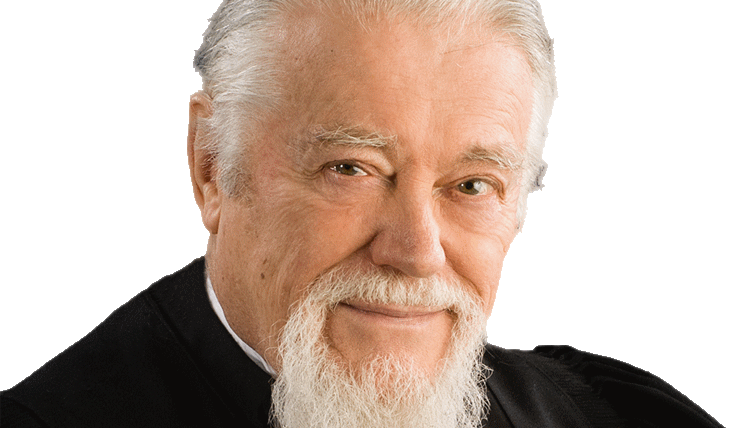Oberlander’s convoluted deportation process beaten by the clock
When he first arrived in Canada in 1954, Helmut Oberlander undoubtedly presented to immigration officials as a respectable young Ukrainian man in his twenties, downplaying his German ethnicity and exaggerating the location of his birth in Ukraine.
He was among the thousands of immigrants seeking a new life in Canada. I was among them, so have a fair idea of what he – and the immigration authorities – were up against in the screening process.
At that time, the crush of immigrants coming into Canada created lineups that authorities were under pressure to process. Each person had to fill out a “Landed Immigrant” card declaring place and date of birth.
It is not surprising that someone as young as Oberlander, born in Ukraine, would slip under the radar. Nor would there be any reason for them to suspect that his being a wartime interpreter would in itself demand his exclusion from Canada.
He was an interpreter for a Nazi death squad
However, it is difficult to imagine how an interpreter working for the Einsatzkommando – a notorious Nazi death squad – could not be complicit in the truly horrific interrogation techniques used by those experts in applying scare tactics, threats, torture and human degradation.
Oberlander applied for Canadian citizenship as soon as he was allowed after five years of residency and became “naturalized” in 1960. By then he was a permanent resident and there was no mechanism in place to reinterrogate applicants of citizenship. So he would not have been questioned about his past, at that point.
In fact, his past did not come to light until three years later, when he let down his guard to develop a more prominent business profile as a real estate developer.
Who among the hundreds of people he had mercilessly grilled in their own language, translating the threats of his Einsatzkommando interrogators, would forget the face of the young man who held their tenuous destiny in his hands? One wrong answer and they would be eliminated. Their lives literally hung in the balance of his interpretative skills.
How could he not be recognized by the abused and intimidated victims of that vicious Nazi regime?
RCMP kept an eye on him for 30 years
Although the RCMP were tipped off in 1963 that Oberlander was living in Canada under false pretences, they had no reason to believe that criminal charges would stick. They kept an eye on him, so to speak, but that’s all they could do for 30 years.
In 1995, the RCMP investigated Oberlander again, but by then Imre Finta – the first person prosecuted under Canada’s war crimes legislation – had been acquitted on similar charges in a decision upheld by courts of appeal. As an articling student for Finta’s lawyer, Doug Christie, I had a hand in drafting Finta’s legal arguments and had occasion to interview him more than once.
Finta, a wartime Hungarian gendarme, was accused of assigning Jews to particular boxcars for transport to Auschwitz. Many of the survivors would never forget the face of the man who, in their minds, determined their fate or the fate of their loved ones whom they were destined never to see again. Their testimony at trial was memorable, even from a defence perspective.
- Extradition a ‘stacked deck’ resulting in anguish, even suicide
- Wrongful convictions, right to silence explored by new law journal
- Meng’s ankle bracelet represents a modern-day ‘Scarlet Letter’
Arguably, Finta was at least one step further removed from culpability than Oberlander, who more directly interfaced with the victims of the interrogators. Oberlander could hardly protest that he was “just doing his job” as the torture of the interrogatees persisted while he asked loaded questions.
Nonetheless, the Finta case was regarded as a precedent. Therefore, the RCMP still could not proceed with criminal charges against Oberlander.
Deportation was to follow denaturalization
In accordance with a new protocol, Oberlander had to be stripped of his Canadian citizenship and the constitutional rights that status provides to citizens. So rather than using the Criminal Code, our government used administrative law procedures. Step one was “denaturalization” – revoking his citizenship. Step two: once he was denaturalized, the government would initiate deportation proceedings.
His Canadian citizenship was revoked in 2001 by administrative fiat. But such decisions are subject to judicial review in the Federal Court. The government tried to revoke his citizenship, again and again, only to have the revocation set aside by various federal courts, in 2007, 2012 and 2017.
Eventually, the revocation stuck and the appeal of his “denaturalization” came to an end, with the court ruling that because he assisted the Nazi death squads achieve their nefarious designs, he should not have been allowed to enter Canada in the first place, let alone be granted Canadian citizenship.
At last, the government could proceed with the second phase: deportation. In Canada, this is decided by a different body: the Immigration and Refugee Board (IRB). It heard his case in two days of scheduled hearings earlier this month before adjourning when Oberlander’s doctor affirmed by affidavit that he was on death’s door. He died before the IRB could reconvene.
‘This matter is now moot’
“This matter,” lawyer Ronald Poulton wrote to the board in a classic understatement, “is now moot.”
Although it reflects the ineptitude of past legislation, the Oberlander case itself stands as an important precedent for future attempts to strip suspected war criminals of their citizenship as a first step to bringing them to justice.
- Gary Botting is the author of Extradition between Canada and the United States (Brill), Extradition: Individual Rights vs. International Obligations (Lambert), Halsbury’s Laws of Canada: Extradition (LexisNexis) and Canadian Extradition Law Practice (LexisNexis).
